Who didn’t hide - I’m not to blame (history of secrecy in aviation)
In the descriptions of modern combat aircraft, “inconspicuous" is almost the most significant characteristic. Important and interesting. Under the cut, an attempt to describe the history and various aspects of stealth. There will be a lot of pictures, but do not complain, aviation is beautiful.
So, let's go from
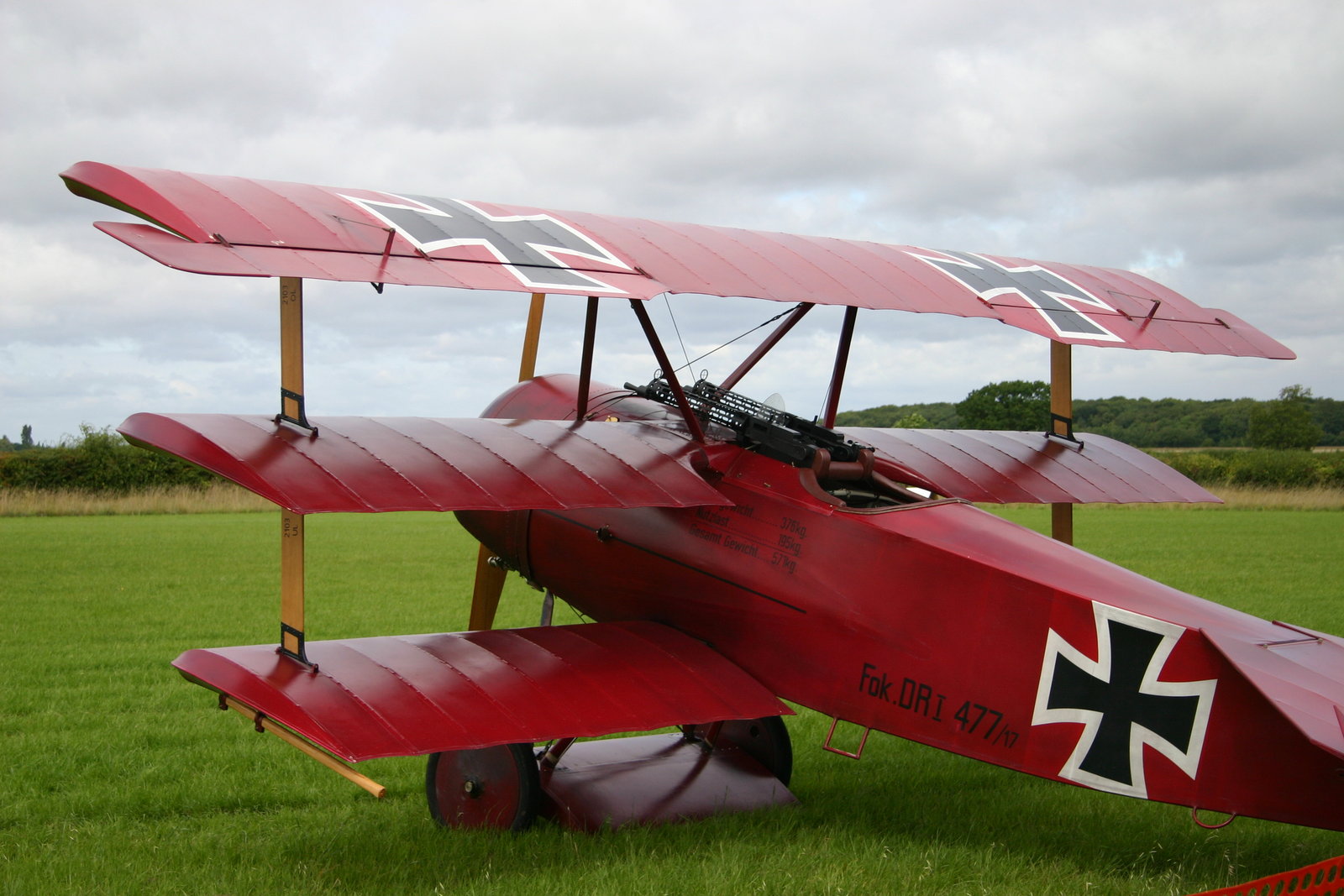
before

Initially, the pilots were so proud of their exceptionality that it never occurred to them to hide their presence in the air. On the contrary, as in the story with Richthofen, they tried to clearly identify themselves.

But, as soon as aviation became a real threat and began to be regularly shot down, the surviving heroes became preoccupied with secrecy. Since then, stealth of all kinds: acoustic, optical, thermal, radio, has been continuously improved.
I will try, roughly following the history of the issue, to briefly outline the basics and types of secrecy. Fortunately, they, the basics, are surprisingly simple. In contrast to the implementation.
The aircraft can be heard from afar by the sound of the engine and, of course, it was used, and quite seriously. To better capture the sound and especially the direction to it, we used special hub devices. From small and mobile:

To huge stationary in Britain:

In one form or another, acoustic direction finders were in all armies, and then they disappeared. Aircraft became much noisier and ... much more secretive. The reason is the speed of flight.
A supersonic plane is not heard at all until it passes by and, if it flies high and fast, the sound will reach us when it is too late. Even subsonic, but fast, the plane will be heard when it is already too close. In addition, sound direction finding did not give sufficient accuracy, especially if the aircraft was not alone.
Much more often the plane in the sky is searched, of course, in the optical, infrared and radio ranges. We do not consider x-rays and gamma radiation, they are absorbed too quickly by air and the range is too small (obviously, but suddenly someone asks).
Optical stealth, in the visible range, has been used for a long time, and not only by people.
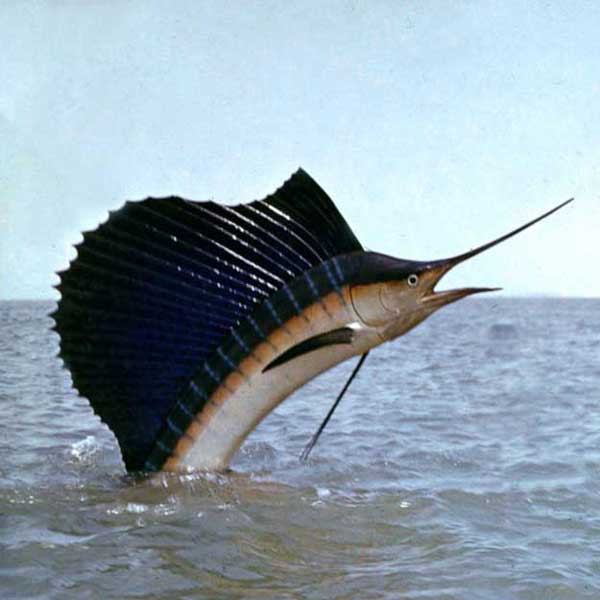
Like fish, airplanes acquired a light abdomen and a dark back, like this Yak-3:

The fact that the bottom was made exactly blue, and the top more often green - is actually not so important. For machines flying low (attack aircraft, helicopters), this approach has been preserved and developed to deforming image spots. But for those flying higher, camouflage is not so important, so most combat aircraft are just gray.
It is unrealistic to do anything more serious at the modern technical level. Oddly enough, there are ways to make an object fundamentally invisible in optics. But, for many reasons, they are unlikely to get to aviation implementation, so let's move on to the methods of detection and, of course, stealth, out of visible light.
The engine is not only noisy, but also hot, you only need to be able to see. And you need to be able to hide his ardor.
Problems of visibility of red-hot engine parts appeared early, in the era of piston engines and the beginning of night sorties. The exhaust pipes heat up to a bright red glow, and the exhaust gases glow blue at night. Quite often, an enemy night bomber was detected by the glow of the exhaust and exhaust pipes. Therefore, for airplanes specially designed for night work, the exhaust manifolds were changed, and heat shields were installed.
But seriously, the issue of shielding the hot parts and exhaust took up, of course, after the proliferation of missiles with infrared (thermal) homing heads.

For helicopters, for example, it has become common to mix exhaust with outdoor air. So the nozzle becomes invisible, and the stream is no longer so hot. Mi-24 is equipped with such screen-exhaust devices:

Helicopter-type EVUs are not suitable for aircraft, because it is the hot stream that gives thrust. The first jets could not do anything about it - there wasn’t enough thrust stock.
Over time, the engines became even more powerful, but they also became dual-circuit, where exhaust gases mix with the flow of relatively cold air from the external circuit.

But the problem has not disappeared: the flight speed limits the degree of bypass and, accordingly, the degree of cooling. The higher the planned flight speed, the lower the effective bypass ratio. When the engine is switched on afterburner, there is no sense in talking about jet cooling.
There are other solutions. You can change the cross section of the jet, make it flat. Due to the larger surface, such a jet cools faster and dissipates faster. Here, for example, nozzles F-22:

The solution is complex and very disadvantageous in terms of engine traction, so it is rarely used on, you can say, extreme devices. More extreme F-117, probably already nowhere:

Of course, the good old way to block the hottest parts with something is not forgotten either. For example, in V-2, one can also see the desire to make the jet flat, and reduce its visibility from below:

A similar solution was planned for YF-23 (competitor F-22):

At the same time, the engine is shielded from radio waves, so is it time to switch to stealth for radars? No, wait a little while, there’s also the UV range.
Detection in the ultraviolet range differs from others - the target is not illuminated and catches reflection, but is observed as a shadow against the background of the sky glowing with ultraviolet light. This property was possessed, for example, by the homing heads of the FIM-92 “Stinger”

There is nowhere else to hide - nowhere, the plane looks like a black spot. You have to do the opposite, shine with UV lights, shoot traps. In general, not easy. As an independent way of aiming, UV-pointing is not good, but in combination with other methods - a very unpleasant thing.
No matter how you list the methods of detection and stealth, nothing can compare in range and independence from weather conditions with a radar. Hence the importance attached to radar stealth.
I must say right away: there are locators against which small tricks do not work. Waves [many] meter long are reflected off the plane as a whole, and what details are there in its shape is not very important. Even beyond the horizon, they’ll notice that “somewhere there something flies.” Unfortunately for anti-aircraft gunners and fortunately for airplanes, these locators are only suitable for detection, aiming with them will not work, accuracy is not the same.
Fighting with locators began almost immediately with the beginning of their application, exposing a “shield” of chopped foil. During the war, only the Americans threw over forty thousand tons of foil over Germany. In one raid, up to 2.5 million packs of 2000 tapes in each were dropped. Five billion! The length of one strip reached 120 m, respectively, the wavelength used by the locator. There were also special aircraft producing active radio interference. Actions, more than large-scale, but very general, "block everything." Because it’s good to hide so a single plane is difficult and expensive.
Locators with a shorter wavelength are suitable for precise aiming on a specific aircraft. And the size, shape and properties of the surfaces of the aircraft begin to play a role. In short, we got to the main point.
For several decades, designers of jet planes faced tasks and more importantly radio concealment: speed, altitude, maneuverability ... They tried to provide unexpectedness of appearance with a high flight speed. For example, the "hundred" T-4 was supposed to give out over 3000 km / h:
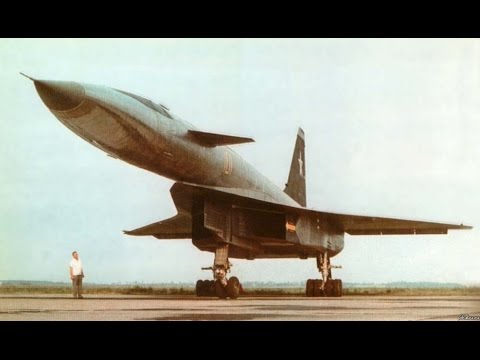
like the XB-70 Valkyrie:

Or low altitude, flying in the mode of enveloping the surface, like B-1B:

Please note that the front “wings” of the B-1B are small, because it is not a stabilizer for the entire aircraft, but the dampers of the pilot’s cabin shaking when flying near the ground.
Airplanes, by themselves inconspicuous for locators, existed, which was noted with pleasure, but for the time being they did not receive special development.
The most noticeable was the inconspicuousness (pardon for pun intended) for aircraft with the “flying wing” pattern, for example, this is what the Avro “Vulcan” looks like in comparison with the B-52:

For radars, the Vulcan was no more noticeable than a small fighter. One fighter, any.
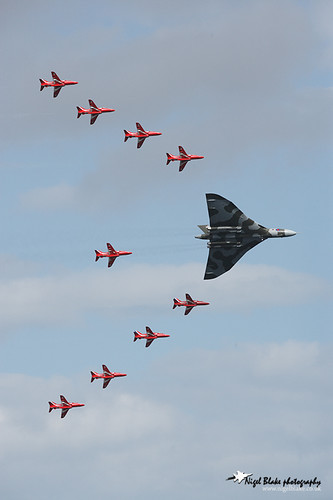
But another “flying wing”, B-35, did not possess such a marvelous property, although it was even more sleek in appearance:
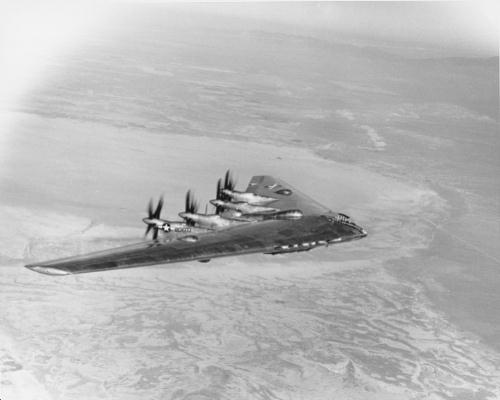
Why? Let's analyze a little further. In the meantime, another predecessor, which already possessed many features of these invisibles, because the scout needs to be secretive. Admire, the fastest of the former in the series of aircraft, SR-71:

The difference between modern "real stealth" from him is that in the years of its development (1960s) it was impossible to carry out calculations of a modern level, and there were no radar absorbing coatings. However, at such speeds, not much coverage will survive.
So, it's time to figure out the components of stealth. In the most general terms, of course.
To reduce radar visibility, you must first understand why it is noticeable, a simple "beam is reflected" is not enough. In short, a serious scientific contribution is needed. One of the first serious studies of radio wave diffraction, which influenced all subsequent development, was made by our (and then American) scientist, Peter Ufimtsev. In 1962, quite openly, his book was published at the Soviet Radio Publishing House. She, like other works on this subject, is full of mathematics, but we will try to reduce everything to a few gross simplifications.
The picture of reflections is very complex, but the main violators of stealth are known:
A corner reflector, also known as a reflector, is familiar to everyone by cars, bicycles, reflective paint, and so on:

The essence is simple, the beam is reflected several times and goes back to where it was emitted:

The corner reflector is ideal for increasing visibility. And it’s not necessary for this to be a classic box of mirrors. Any pit, for example, a pilot's cabin, can play its role. The lantern of the aircraft for radio beams is almost transparent, the cabin is a box with metal walls, why not a corner reflector?
The box is closed, covering the lantern with a thin layer of metal, which does not interfere with the pilot's watch, but hides the cockpit from the locator. Most often, coatings made of transparent conductors such as indium tin oxide are used, although sometimes they write about a thin gold layer. Because of such coatings, the lanterns of modern combat aircraft, depending on the lighting, look golden, brown, gray, purple ..., here is an example of the F-16:
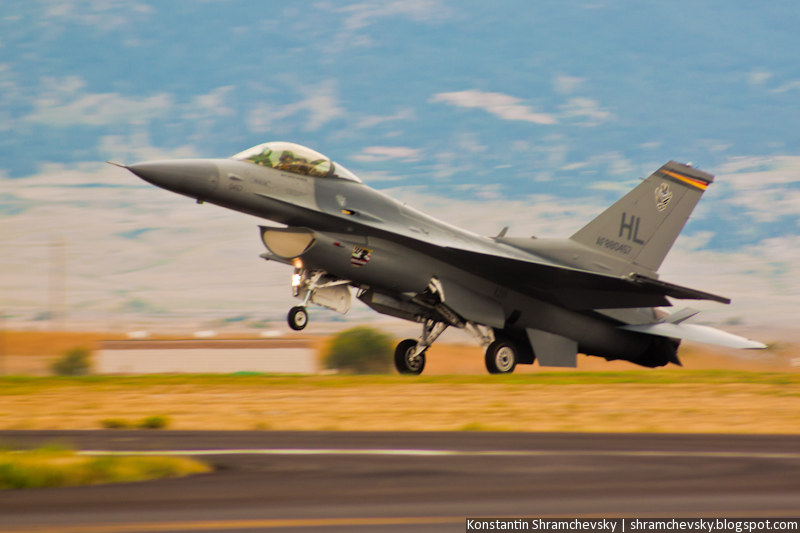
Another type of corner reflector is obtained in the “armpits” formed by the fuselage and wing.
They struggle with this by placing the wing below. Visibility from above is growing, but this is not as important as visibility from below. Therefore, all the "stealth" - low-winged. Even better is the integrated circuit, when the wing smoothly goes into the fuselage, like the Tu-160:

It is noticeable that the Tu-160, like the progenitor of its form, the B-1 (yes, the "laws of aerodynamics", I remember), is not ideally hidden, the engine nacelles form reflective corners.

An example of an aircraft with declared secrecy is the MiG-1.42 (1.44). But look - what secrecy is there? Bucket air intakes, slot for draining the boundary layer, tooth on the stabilizer, keel, extended under the stabilizer, protruding mechanization on the lower surface of the wing:

Again in the dark, again take a flashlight and shine on the globe. Whichever way we go, we will see a bright spot in the center.

Like it or not, there will always be a place on the ball that is perpendicular to our beam and reflects it back to us. This is the "bright point".
But what a ball, a bright point can provide any convex surface. These bulges are worse than planes. A plane can also reflect exactly backward, but only if the direction of the beam is perpendicular to the plane. For a flying airplane, this means that it will only flash bright for a second, and then it will become almost invisible. And the bulge will not shine so brightly, but from any direction.
The simplest example of a bulge is a wing. It's not flat in profile:
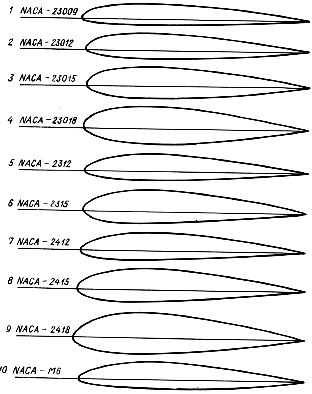
There would seem to be a way out. Profiles that are flat below are not only known, but also widespread. For example, the well-known Clark-Y:

The upper arch is convex ... It doesn’t matter, you can draw the upper arch with a broken line. The trouble, of course, will be with aerodynamics, it is not easy to fly on such a wing. But there is an example of such an aircraft, this is the F-117, for the appearance and unstable flight, nicknamed "Wobblin 'Goblin" (staggering goblin):

It has already been mentioned that a plane across the beam will reflect it back and reflect well. And it was said that the observation time will be very short, the reflection bunny will run and run away from the receiving antenna even faster than the plane flies.
But there are, there are such planes that always turn flat. Their name is blades. The blade rotates, the angle at which it is turned to us changes all the time. During the turnaround, the angle will necessarily be straight. For a split second, but immediately there will be a flare from another blade, the third ... Moreover, this effect, like a bright point, manifests itself from a variety of directions. But the propellers and helicopters have blades not only for propellers and helicopters, there are more than enough blades for compressors and turbines for jet engines.
There is nothing to be done with helicopters and helicopters, stealth is impossible (I wrote about the B-35 above, a smooth flying wing, but ...). But with jet engines, you can think of something, they are small (relative to the helicopter rotor).
For example, you can make an S-shaped duct to the engine. Due to the curvature of the engine (more precisely, the compressor blades) will be "invisible", the beam will be reflected from wall to wall and die out.

You can simply do a very long air duct, then the blades will be visible only when viewed strictly from the front. You can use a device called a radar blocker. Fly in the ointment - such an air duct works worse, the efficiency of the engine decreases.
It is especially difficult to hide the turbine blades from the back of the irradiation, there’s not much you can do, the losses due to a too long or curved nozzle will be very large. It helps somewhat that in military aircraft often there are engines with an afterburner, and its internal structure by itself coolly blocks the blades:
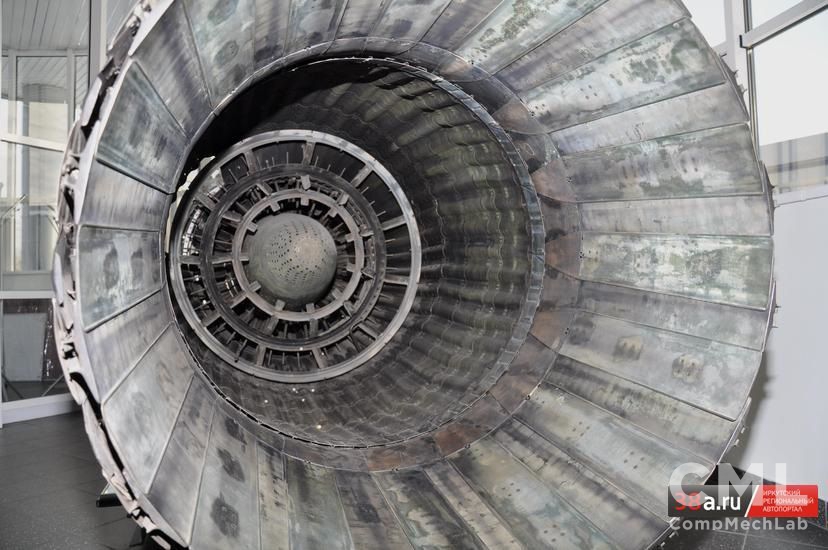
It is time to talk about the wave properties of radio waves. The fact that more or less long waves are reflected from the plane, as from the whole, has already been written, but with short, centimeter waves, is not so simple. Omitting complex physics, one can imagine the boundary as a re-emitting antenna. The reflection can be quite strong. It is impossible to completely eliminate this trouble, so what to do? First of all, it would be nice to have fewer edges at all.
For example, abandoning the stabilizer (F-117), and from the keels too (B-2):
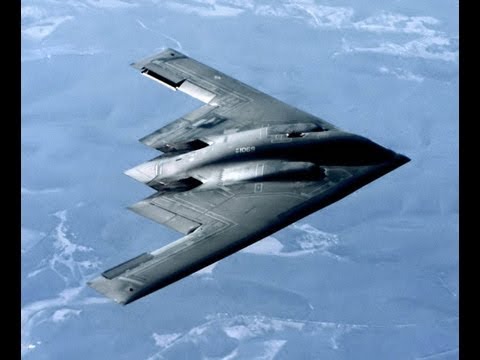
Secondly, it is necessary to avoid reflection in all directions. Obviously, the best reflection, as with a plane, occurs when irradiating “in the forehead”, perpendicular to the plane or edge. This means that the plane was detected strictly from one direction (and brightly illuminated by the locator for a second, or even a split second), it is necessary that all the edges go in the same direction, are parallel to each other. It will not work to make all the lines parallel, but you can divide them into groups so that there are a small number of directions from which you can see, but from all the others you can’t. It is this technique that gives such a characteristic appearance to modern stealth. So, in the Su-57 (T-50), the front edges of the wing are parallel to the front edges of the stabilizer, and the rear edges are parallel to each other:
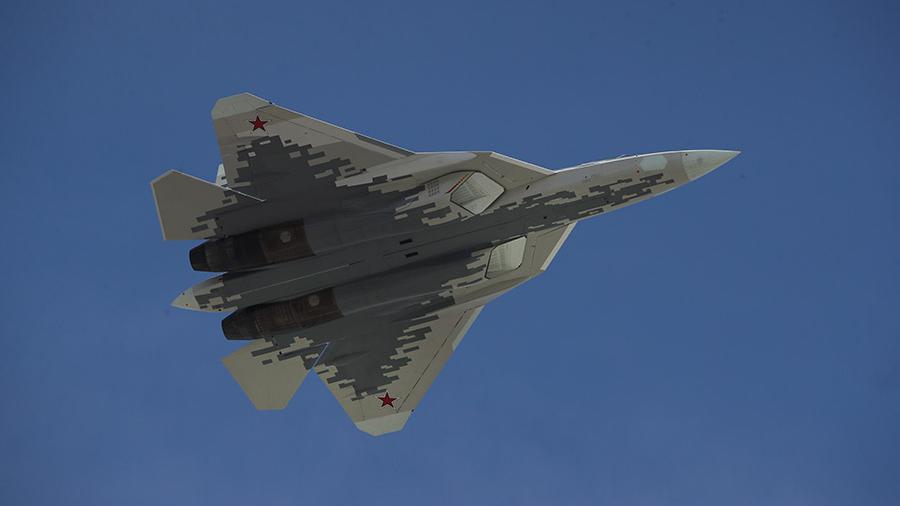
But not only the edges work as reflectors. Seams, joints of paneling panels - also reflect. To weaken the effect, the seam is “broken” into parts, choosing the length of these parts inconvenient for the expected wavelength. Moreover, they try to make the components of the seam parallel to the edges of the wing and stabilizer. Joints turn out with “cloves”. Here, for example, F-22. See how the edges of the bomb bay are made? And the chassis cover is also visible there?
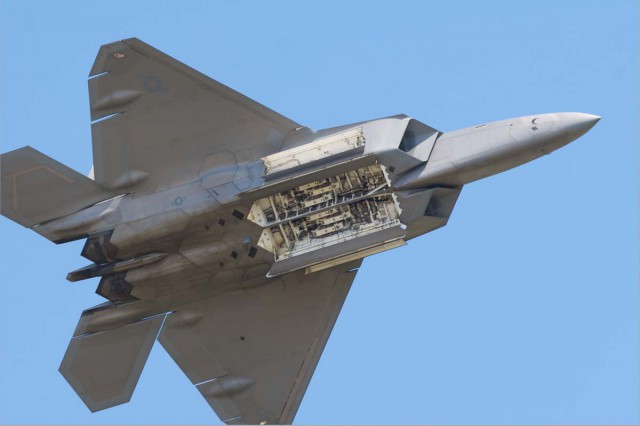
Another trick is to make a wing with reverse sweep (S-37 / Su-47 Golden Eagle):
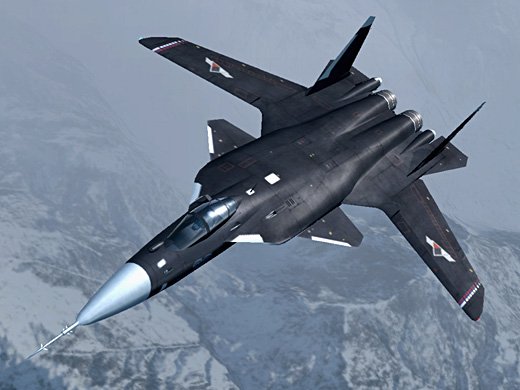
The trick here is that when irradiated from the front, reflection from the wing edge falls into the fuselage and hides behind it. The rear wing can be seen better, but the rear plane is visible when it is already flying away, having done its job. Yes, and the chance of getting into the run after the launch is much lower than shooting from the front hemisphere.
Aerodynamic advantages were also expected from the reverse sweep, which is usually not the case with anti-radar measures. Moreover, there were several attempts to build an aircraft with reverse sweep, but failed to cope with the divergence of the wing (by twisting, you could even say, turning the wing by air flow). New materials, carbon fiber, allowed to solve this problem, albeit at a high cost, but it was found that the vortices coming from the root of the wing spoil the stability and controllability so much that this machine had no continuation. And not only here, the Americans also tried the reverse sweep on the X-29, with the same result.
Now about the radar absorbing coating, “black paint”:

The coating is quite thick, very expensive and, as it turned out, is not always durable. This is not just paint, but a whole tricky complex. In the roughest description, a lot of small metal needles or reflecting glass beads with a metallized surface are randomly located in the paint layer. They, of course, reflect radio waves. But they reflect in small portions in a variety of directions, against each other ... as a result, the radio emission is scattered, absorbed. The signal reflected outward is significantly reduced.

In exchange, of course, shortcomings are acquired: such a coating weighs a lot, under the pressure of air, dust particles and drops of water, it quickly wears out, or even peels off. We will not even mention the price.
One of the problems of visibility is created by its own aircraft radar. Even if you turn it off. As luck would have it, its antenna is specially made to reflect. Let the beautiful nose cone not deceive - it is transparent for radio waves, and after it ..., for example, the Hurricane-5: radar:

Old locators with parabolic plates knew how to "see" in only one direction, and they were turned for review. In the off state, the plate stopped turned upward so that when irradiated, front and bottom would not give a strong reflection.
Okay, this is an old-fashioned “plate”, but newer planes also have something to show off in the rays of an enemy locator, for example, a flat headlamp.
The illustration of the radar "Beetle-M" on the MiG-29:

Electronically scanned flat phased antennas can "look sideways" without physical rotation. Of course, they got rid of expensive, heavy and reducing the reliability of turn systems. In order to avoid strong reflection during irradiation from the front, the plate is mounted turned slightly upward, although this reduces the possibilities for observation in the lower hemisphere. See the slope?

There are ways and more exotic. For example, not so long ago the media made a noise about the plasma cloud, behind which planes supposedly know how to hide. Of course, it’s ridiculous, the plasma will simply blow away, and even a nuclear reactor on board will not help to generate it in such volumes. But, nevertheless, plasma is used. If you fill the volume inside the radiotransparent fairing with easily ionized gas and ionize it (turn it into plasma) when the locator is turned off, the plane in radio outlines acquires a beautiful, sharp and poorly reflective nose. If you need to turn on your locator, you can quench the plasma in fractions of a second, simply by ventilating the volume.
I am still an amateur, albeit of a wide profile. A little more serious and more detailed (which some readers may have expected from me) can be found in the article “Towards the fifth and sixth generation”:
paralay.iboards.ru/viewtopic.php?f=5&t=138
But, alas, the original site Paralaya has completely disappeared, and the new one is also having problems with this article. Secrecy is secrecy!
Upd: respected kurec gave a well-functioning link to the article.
s92025sm.beget.tech/stat.html
Thank.
OIelukoe, Tarasv, ptg.Martynov, Old_dancer, AKnyazev , , .
Mingun .
, .., .., .., .., .. .
So, let's go from

before

Knights without fear and reproach
Initially, the pilots were so proud of their exceptionality that it never occurred to them to hide their presence in the air. On the contrary, as in the story with Richthofen, they tried to clearly identify themselves.

But, as soon as aviation became a real threat and began to be regularly shot down, the surviving heroes became preoccupied with secrecy. Since then, stealth of all kinds: acoustic, optical, thermal, radio, has been continuously improved.
I will try, roughly following the history of the issue, to briefly outline the basics and types of secrecy. Fortunately, they, the basics, are surprisingly simple. In contrast to the implementation.
Do not go to listen to the cherished songs
The aircraft can be heard from afar by the sound of the engine and, of course, it was used, and quite seriously. To better capture the sound and especially the direction to it, we used special hub devices. From small and mobile:

To huge stationary in Britain:

In one form or another, acoustic direction finders were in all armies, and then they disappeared. Aircraft became much noisier and ... much more secretive. The reason is the speed of flight.
A supersonic plane is not heard at all until it passes by and, if it flies high and fast, the sound will reach us when it is too late. Even subsonic, but fast, the plane will be heard when it is already too close. In addition, sound direction finding did not give sufficient accuracy, especially if the aircraft was not alone.
Much more often the plane in the sky is searched, of course, in the optical, infrared and radio ranges. We do not consider x-rays and gamma radiation, they are absorbed too quickly by air and the range is too small (obviously, but suddenly someone asks).
You are lying on the lawn and you are not visible
Optical stealth, in the visible range, has been used for a long time, and not only by people.

Like fish, airplanes acquired a light abdomen and a dark back, like this Yak-3:

The fact that the bottom was made exactly blue, and the top more often green - is actually not so important. For machines flying low (attack aircraft, helicopters), this approach has been preserved and developed to deforming image spots. But for those flying higher, camouflage is not so important, so most combat aircraft are just gray.
It is unrealistic to do anything more serious at the modern technical level. Oddly enough, there are ways to make an object fundamentally invisible in optics. But, for many reasons, they are unlikely to get to aviation implementation, so let's move on to the methods of detection and, of course, stealth, out of visible light.
She immediately thought she was smelling, hearing this soft, warm spirit
The engine is not only noisy, but also hot, you only need to be able to see. And you need to be able to hide his ardor.
Problems of visibility of red-hot engine parts appeared early, in the era of piston engines and the beginning of night sorties. The exhaust pipes heat up to a bright red glow, and the exhaust gases glow blue at night. Quite often, an enemy night bomber was detected by the glow of the exhaust and exhaust pipes. Therefore, for airplanes specially designed for night work, the exhaust manifolds were changed, and heat shields were installed.
But seriously, the issue of shielding the hot parts and exhaust took up, of course, after the proliferation of missiles with infrared (thermal) homing heads.

For helicopters, for example, it has become common to mix exhaust with outdoor air. So the nozzle becomes invisible, and the stream is no longer so hot. Mi-24 is equipped with such screen-exhaust devices:

Helicopter-type EVUs are not suitable for aircraft, because it is the hot stream that gives thrust. The first jets could not do anything about it - there wasn’t enough thrust stock.
Over time, the engines became even more powerful, but they also became dual-circuit, where exhaust gases mix with the flow of relatively cold air from the external circuit.

But the problem has not disappeared: the flight speed limits the degree of bypass and, accordingly, the degree of cooling. The higher the planned flight speed, the lower the effective bypass ratio. When the engine is switched on afterburner, there is no sense in talking about jet cooling.
There are other solutions. You can change the cross section of the jet, make it flat. Due to the larger surface, such a jet cools faster and dissipates faster. Here, for example, nozzles F-22:

The solution is complex and very disadvantageous in terms of engine traction, so it is rarely used on, you can say, extreme devices. More extreme F-117, probably already nowhere:

Of course, the good old way to block the hottest parts with something is not forgotten either. For example, in V-2, one can also see the desire to make the jet flat, and reduce its visibility from below:

A similar solution was planned for YF-23 (competitor F-22):

At the same time, the engine is shielded from radio waves, so is it time to switch to stealth for radars? No, wait a little while, there’s also the UV range.
The sun, squinting, looks mischievously
Detection in the ultraviolet range differs from others - the target is not illuminated and catches reflection, but is observed as a shadow against the background of the sky glowing with ultraviolet light. This property was possessed, for example, by the homing heads of the FIM-92 “Stinger”

There is nowhere else to hide - nowhere, the plane looks like a black spot. You have to do the opposite, shine with UV lights, shoot traps. In general, not easy. As an independent way of aiming, UV-pointing is not good, but in combination with other methods - a very unpleasant thing.
Do not hide your eyes, I see through you all
No matter how you list the methods of detection and stealth, nothing can compare in range and independence from weather conditions with a radar. Hence the importance attached to radar stealth.
I must say right away: there are locators against which small tricks do not work. Waves [many] meter long are reflected off the plane as a whole, and what details are there in its shape is not very important. Even beyond the horizon, they’ll notice that “somewhere there something flies.” Unfortunately for anti-aircraft gunners and fortunately for airplanes, these locators are only suitable for detection, aiming with them will not work, accuracy is not the same.
analogy from car audio
Tweeters, tweeters, need to be directed exactly towards the listener, otherwise there will be no sense. Mid-range speakers can already be placed simply in the cabin. But the low-frequency subwoofer, at least put it in the trunk, anyway, a person will hear a “boom-boom”, but will not be able to determine the direction.
Fighting with locators began almost immediately with the beginning of their application, exposing a “shield” of chopped foil. During the war, only the Americans threw over forty thousand tons of foil over Germany. In one raid, up to 2.5 million packs of 2000 tapes in each were dropped. Five billion! The length of one strip reached 120 m, respectively, the wavelength used by the locator. There were also special aircraft producing active radio interference. Actions, more than large-scale, but very general, "block everything." Because it’s good to hide so a single plane is difficult and expensive.
Locators with a shorter wavelength are suitable for precise aiming on a specific aircraft. And the size, shape and properties of the surfaces of the aircraft begin to play a role. In short, we got to the main point.
Predecessors
For several decades, designers of jet planes faced tasks and more importantly radio concealment: speed, altitude, maneuverability ... They tried to provide unexpectedness of appearance with a high flight speed. For example, the "hundred" T-4 was supposed to give out over 3000 km / h:

like the XB-70 Valkyrie:

Or low altitude, flying in the mode of enveloping the surface, like B-1B:

Please note that the front “wings” of the B-1B are small, because it is not a stabilizer for the entire aircraft, but the dampers of the pilot’s cabin shaking when flying near the ground.
Airplanes, by themselves inconspicuous for locators, existed, which was noted with pleasure, but for the time being they did not receive special development.
The most noticeable was the inconspicuousness (pardon for pun intended) for aircraft with the “flying wing” pattern, for example, this is what the Avro “Vulcan” looks like in comparison with the B-52:

For radars, the Vulcan was no more noticeable than a small fighter. One fighter, any.

But another “flying wing”, B-35, did not possess such a marvelous property, although it was even more sleek in appearance:

Why? Let's analyze a little further. In the meantime, another predecessor, which already possessed many features of these invisibles, because the scout needs to be secretive. Admire, the fastest of the former in the series of aircraft, SR-71:

The difference between modern "real stealth" from him is that in the years of its development (1960s) it was impossible to carry out calculations of a modern level, and there were no radar absorbing coatings. However, at such speeds, not much coverage will survive.
So, it's time to figure out the components of stealth. In the most general terms, of course.
Invisibility wide strokes
To reduce radar visibility, you must first understand why it is noticeable, a simple "beam is reflected" is not enough. In short, a serious scientific contribution is needed. One of the first serious studies of radio wave diffraction, which influenced all subsequent development, was made by our (and then American) scientist, Peter Ufimtsev. In 1962, quite openly, his book was published at the Soviet Radio Publishing House. She, like other works on this subject, is full of mathematics, but we will try to reduce everything to a few gross simplifications.
The picture of reflections is very complex, but the main violators of stealth are known:
- Corner reflector
- Bright dot
- Reflection from a flat surface across the beam.
- Reflection from the border
Corner reflector
A corner reflector, also known as a reflector, is familiar to everyone by cars, bicycles, reflective paint, and so on:

The essence is simple, the beam is reflected several times and goes back to where it was emitted:

The corner reflector is ideal for increasing visibility. And it’s not necessary for this to be a classic box of mirrors. Any pit, for example, a pilot's cabin, can play its role. The lantern of the aircraft for radio beams is almost transparent, the cabin is a box with metal walls, why not a corner reflector?
The box is closed, covering the lantern with a thin layer of metal, which does not interfere with the pilot's watch, but hides the cockpit from the locator. Most often, coatings made of transparent conductors such as indium tin oxide are used, although sometimes they write about a thin gold layer. Because of such coatings, the lanterns of modern combat aircraft, depending on the lighting, look golden, brown, gray, purple ..., here is an example of the F-16:

Another type of corner reflector is obtained in the “armpits” formed by the fuselage and wing.
They struggle with this by placing the wing below. Visibility from above is growing, but this is not as important as visibility from below. Therefore, all the "stealth" - low-winged. Even better is the integrated circuit, when the wing smoothly goes into the fuselage, like the Tu-160:

It is noticeable that the Tu-160, like the progenitor of its form, the B-1 (yes, the "laws of aerodynamics", I remember), is not ideally hidden, the engine nacelles form reflective corners.

An example of an aircraft with declared secrecy is the MiG-1.42 (1.44). But look - what secrecy is there? Bucket air intakes, slot for draining the boundary layer, tooth on the stabilizer, keel, extended under the stabilizer, protruding mechanization on the lower surface of the wing:

Bright dot
Again in the dark, again take a flashlight and shine on the globe. Whichever way we go, we will see a bright spot in the center.

Like it or not, there will always be a place on the ball that is perpendicular to our beam and reflects it back to us. This is the "bright point".
But what a ball, a bright point can provide any convex surface. These bulges are worse than planes. A plane can also reflect exactly backward, but only if the direction of the beam is perpendicular to the plane. For a flying airplane, this means that it will only flash bright for a second, and then it will become almost invisible. And the bulge will not shine so brightly, but from any direction.
The simplest example of a bulge is a wing. It's not flat in profile:

There would seem to be a way out. Profiles that are flat below are not only known, but also widespread. For example, the well-known Clark-Y:

The upper arch is convex ... It doesn’t matter, you can draw the upper arch with a broken line. The trouble, of course, will be with aerodynamics, it is not easy to fly on such a wing. But there is an example of such an aircraft, this is the F-117, for the appearance and unstable flight, nicknamed "Wobblin 'Goblin" (staggering goblin):

Flat surface reflection
It has already been mentioned that a plane across the beam will reflect it back and reflect well. And it was said that the observation time will be very short, the reflection bunny will run and run away from the receiving antenna even faster than the plane flies.
But there are, there are such planes that always turn flat. Their name is blades. The blade rotates, the angle at which it is turned to us changes all the time. During the turnaround, the angle will necessarily be straight. For a split second, but immediately there will be a flare from another blade, the third ... Moreover, this effect, like a bright point, manifests itself from a variety of directions. But the propellers and helicopters have blades not only for propellers and helicopters, there are more than enough blades for compressors and turbines for jet engines.
There is nothing to be done with helicopters and helicopters, stealth is impossible (I wrote about the B-35 above, a smooth flying wing, but ...). But with jet engines, you can think of something, they are small (relative to the helicopter rotor).
For example, you can make an S-shaped duct to the engine. Due to the curvature of the engine (more precisely, the compressor blades) will be "invisible", the beam will be reflected from wall to wall and die out.

You can simply do a very long air duct, then the blades will be visible only when viewed strictly from the front. You can use a device called a radar blocker. Fly in the ointment - such an air duct works worse, the efficiency of the engine decreases.
It is especially difficult to hide the turbine blades from the back of the irradiation, there’s not much you can do, the losses due to a too long or curved nozzle will be very large. It helps somewhat that in military aircraft often there are engines with an afterburner, and its internal structure by itself coolly blocks the blades:

Reflection from the border
It is time to talk about the wave properties of radio waves. The fact that more or less long waves are reflected from the plane, as from the whole, has already been written, but with short, centimeter waves, is not so simple. Omitting complex physics, one can imagine the boundary as a re-emitting antenna. The reflection can be quite strong. It is impossible to completely eliminate this trouble, so what to do? First of all, it would be nice to have fewer edges at all.
For example, abandoning the stabilizer (F-117), and from the keels too (B-2):

Secondly, it is necessary to avoid reflection in all directions. Obviously, the best reflection, as with a plane, occurs when irradiating “in the forehead”, perpendicular to the plane or edge. This means that the plane was detected strictly from one direction (and brightly illuminated by the locator for a second, or even a split second), it is necessary that all the edges go in the same direction, are parallel to each other. It will not work to make all the lines parallel, but you can divide them into groups so that there are a small number of directions from which you can see, but from all the others you can’t. It is this technique that gives such a characteristic appearance to modern stealth. So, in the Su-57 (T-50), the front edges of the wing are parallel to the front edges of the stabilizer, and the rear edges are parallel to each other:

But not only the edges work as reflectors. Seams, joints of paneling panels - also reflect. To weaken the effect, the seam is “broken” into parts, choosing the length of these parts inconvenient for the expected wavelength. Moreover, they try to make the components of the seam parallel to the edges of the wing and stabilizer. Joints turn out with “cloves”. Here, for example, F-22. See how the edges of the bomb bay are made? And the chassis cover is also visible there?

Another trick is to make a wing with reverse sweep (S-37 / Su-47 Golden Eagle):

The trick here is that when irradiated from the front, reflection from the wing edge falls into the fuselage and hides behind it. The rear wing can be seen better, but the rear plane is visible when it is already flying away, having done its job. Yes, and the chance of getting into the run after the launch is much lower than shooting from the front hemisphere.
Aerodynamic advantages were also expected from the reverse sweep, which is usually not the case with anti-radar measures. Moreover, there were several attempts to build an aircraft with reverse sweep, but failed to cope with the divergence of the wing (by twisting, you could even say, turning the wing by air flow). New materials, carbon fiber, allowed to solve this problem, albeit at a high cost, but it was found that the vortices coming from the root of the wing spoil the stability and controllability so much that this machine had no continuation. And not only here, the Americans also tried the reverse sweep on the X-29, with the same result.
Famous paint
Now about the radar absorbing coating, “black paint”:

The coating is quite thick, very expensive and, as it turned out, is not always durable. This is not just paint, but a whole tricky complex. In the roughest description, a lot of small metal needles or reflecting glass beads with a metallized surface are randomly located in the paint layer. They, of course, reflect radio waves. But they reflect in small portions in a variety of directions, against each other ... as a result, the radio emission is scattered, absorbed. The signal reflected outward is significantly reduced.

In exchange, of course, shortcomings are acquired: such a coating weighs a lot, under the pressure of air, dust particles and drops of water, it quickly wears out, or even peels off. We will not even mention the price.
How to hide the radar
One of the problems of visibility is created by its own aircraft radar. Even if you turn it off. As luck would have it, its antenna is specially made to reflect. Let the beautiful nose cone not deceive - it is transparent for radio waves, and after it ..., for example, the Hurricane-5: radar:

Old locators with parabolic plates knew how to "see" in only one direction, and they were turned for review. In the off state, the plate stopped turned upward so that when irradiated, front and bottom would not give a strong reflection.
Okay, this is an old-fashioned “plate”, but newer planes also have something to show off in the rays of an enemy locator, for example, a flat headlamp.
HEADLIGHT is
Phased Antenna Array. There are moving headlights, fixed, passive, active and digital ... but this is a completely different, vast topic.
The illustration of the radar "Beetle-M" on the MiG-29:

Electronically scanned flat phased antennas can "look sideways" without physical rotation. Of course, they got rid of expensive, heavy and reducing the reliability of turn systems. In order to avoid strong reflection during irradiation from the front, the plate is mounted turned slightly upward, although this reduces the possibilities for observation in the lower hemisphere. See the slope?

There are ways and more exotic. For example, not so long ago the media made a noise about the plasma cloud, behind which planes supposedly know how to hide. Of course, it’s ridiculous, the plasma will simply blow away, and even a nuclear reactor on board will not help to generate it in such volumes. But, nevertheless, plasma is used. If you fill the volume inside the radiotransparent fairing with easily ionized gas and ionize it (turn it into plasma) when the locator is turned off, the plane in radio outlines acquires a beautiful, sharp and poorly reflective nose. If you need to turn on your locator, you can quench the plasma in fractions of a second, simply by ventilating the volume.
Sad conclusion
I am still an amateur, albeit of a wide profile. A little more serious and more detailed (which some readers may have expected from me) can be found in the article “Towards the fifth and sixth generation”:
paralay.iboards.ru/viewtopic.php?f=5&t=138
But, alas, the original site Paralaya has completely disappeared, and the new one is also having problems with this article. Secrecy is secrecy!
Upd: respected kurec gave a well-functioning link to the article.
s92025sm.beget.tech/stat.html
Thank.
Acknowledgments
OIelukoe, Tarasv, ptg.Martynov, Old_dancer, AKnyazev , , .
Mingun .
, .., .., .., .., .. .
All Articles